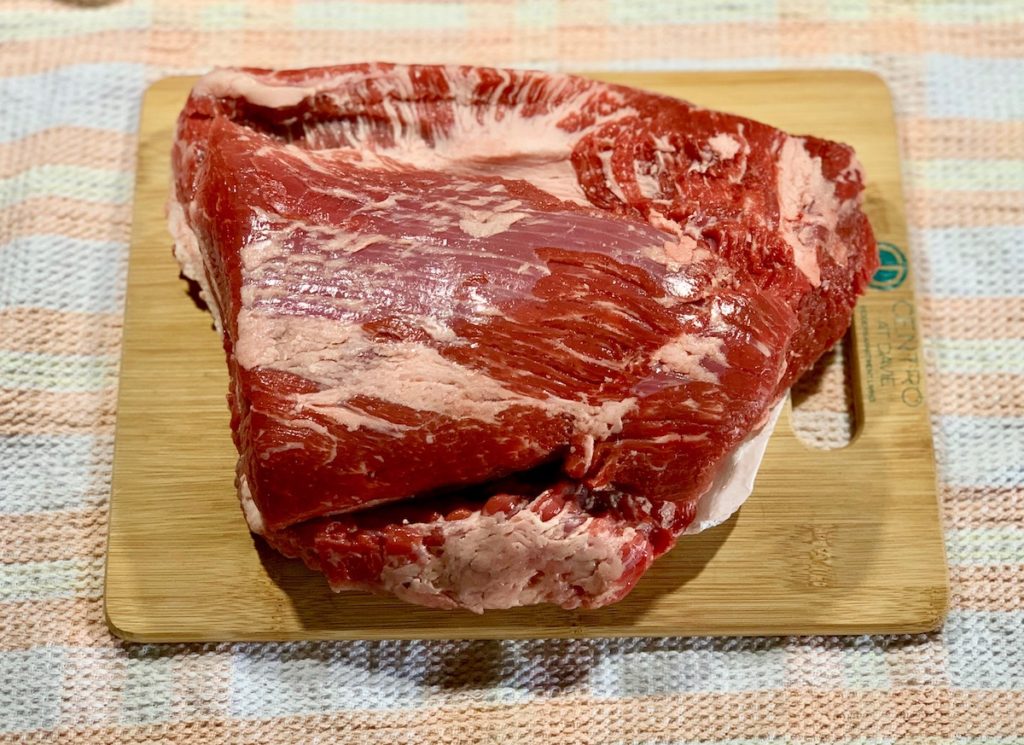Currently there is a global crisis we are all facing and certain food products are really hard to come by, but if you manage to get your hands on some meat you are going to need to know how to store it correctly. Knowing how to store meat correctly can help prevent freezer burn, spoilage, and waste.
Recently Maryim and I tried to squeeze in some grocery shopping and, like everyone else, we weren’t having much luck finding certain foods, one of them being meat products.
Fortunately, after visiting a few stores we came across a good sized beef brisket for 28 bucks. There are lots of things you can make with a brisket so we didn’t even think twice before purchasing. The piece of meat was 3.5 lbs so it needed to be cut down to size before storing. We were very happy to make a purchase that could provide us with at least 3-4 decent meals, maybe even more.

I’m going to show you what to do if you manage to find a meat product that can be used for multiple dishes and how to store it correctly. This will help with freezer organization, preserving your meat longer and reducing the likelihood of spoilage.
What is the definition of “meat”?
Meat can be defined as the skeletal muscle and its associated tissues derived from mammalian, avian, reptilian, amphibian, and aquatic species commonly harvested for human consumption. Edible offal consisting of organs and non-skeletal muscle tissues also are considered meat. For the sake of this article I will be using this definition in my research. However, the definition of “meat” is still debated to this day.
Storing meat products in the refrigerator
- Once you have purchased your meat product be sure to store it immediately. If you are planning on using it on the day of purchase or within 2 – 3 days of purchasing it, it’s ok to store in the refrigerator.
- Make sure your fridge is 40 °F (4.45 °C) or below. Why is this important? Bacteria grows between 40 °F and 140 °F OR 4.45 °C and 60 °C. This is called the “danger zone” (singing the theme song of Top Gun in my head) and should be avoided at all costs when storing meat, cooked or uncooked. In the right conditions, bacteria can grow and multiply from a single cell to two million cells in 7 hours.

- Store your meat in a container of some sort such as a food storage containers or ziplock freezer bags. This will prevent cross contamination from occurring.
- It is important to store raw meat on the bottom shelf of your refrigerator. Make sure to store raw and cooked meat on separate shelves if you cannot store them in separate fridges. Don’t store raw meat above cooked meat because you increase the risk of cross contamination due to unwanted blood/other liquids dripping.


What is cross contamination?
The unintentionally spread from contaminated food to uncontaminated food of bacteria and/or other micro-organisms leads to cross contamination.
Storing meat in the freezer
According to the USDA, “food stored constantly at 0 °F ( -18 °C ) will always be safe. Only the quality suffers with lengthy freezer storage. Freezing keeps food safe by slowing the movement of molecules, causing microbes to enter a dormant stage. Freezing preserves food for extended periods because it prevents the growth of microorganisms that cause both food spoilage and food-borne illness.”
How long can you freeze cooked vs uncooked meat?
| Types of Meat | Uncooked | Cooked |
| Red Meat: Beef, Pork, Lamb, etc. | 4 – 12 months | 2 – 3 months |
| Red Meat: Ground | 3 – 4 months | 2 – 3 months |
| Poultry: Chicken, Turkey, Duck, etc. | 9 – 12 months | 4 months |
| Wild Game: Elk, Rabbit, Moose, etc. | 8 – 12 months | 2 – 3 months |
| Seafood: Fish, Crustaceans, Mollusks, etc. | 3 – 6 months | 3 months |
Three ways to tell if your meat has gone bad in the freezer
- Freezer burn: Your meat has changed color and dried out. Freezer burn occurs when the water molecules in the meat have been replaced by oxygen molecules. Although still edible, it may be tough to chew and not particularly tasty.
- You can smell something rancid: If a protein smells bad then throw it away immediately. This may be due to a power outage or perhaps the meat had gone rancid before freezing.
- Leakage/dripping/bleeding: If a meat product displays any of these qualities I’d really consider throwing it away. This occurs when your freezer is not set to the correct temperature of 0 °F ( -18 °C ) or a power outage led to unintentional thawing. You can double check by smelling it, but if you are unsure then don’t take the chance.
6 helpful tips for freezing meat correctly


- Wrap your meat products up tightly: Use cling wrap or a freezer bag and squeeze the air out. Doing so will prevent air from entering the meat and can slow down the effects of freezer burn. If you have a vacuum sealer then that’s the best way to store meat correctly.
- Portion control: If I’m storing a large chunk of meat I like to cut it into portions to make for easy access and give me flexibility on recipes. This way I can thaw smaller portions rather then thaw the entire piece of meat.
- Organize your freezer: Keep certain food items of the same category together. For example, don’t store a beef filet on top of a salmon filet.
- Don’t hesitate: Freeze raw meat as soon as you can once purchased unless you plan on using it in the near future as stated earlier.
- Date and label: Can you differentiate between frozen pork and frozen beef? How about mutton or lamb? Labeling eliminates the guesswork. Adding a date allows you to make a more informed decision on whether or not to use it.
- Keep an eye on your freezer temp: Being responsible in this regard will ensure that your frozen items stay at a constant temperature. This will hold their quality for longer. If you experience a power outage then try to avoid opening the freezer. Most freezers insulate pretty well and should keep food items from defrosting for a number of hours.
* This post contains affiliate links. While clicking on our link does not add any additional cost to you, it does provide a commission payment for qualifying purchases to Kapptain Cook, which helps us keep our site running.



